As if waking up to the daily news wasn't hard enough already, coffee prices have been surging for years, driven largely by the climate crisis. Extended droughts and heat waves are hammering production, and smallholder farmers (who grow 80% of the world's coffee) are at the frontline.
For coffee farming to survive, growers need to make their plots more resilient to climate change. One proven approach? Planting coffee within diverse agroforestry systems–a practice already at the heart of several of our projects worldwide. To celebrate International Coffee Day on October 1st, here are some of those inspiring initiatives.
Shade: Coffee's secret ingredient
One of the simplest yet most effective approaches is planting shade trees alongside coffee. Coffee tastes best grown with overhead canopy rather than in direct sunlight, and protected plants produce higher-quality beans that fetch better prices.
We're working with smallholder coffee farmers in Uganda's Mubende District to plant shade trees and tackle deforestation on their land. Farmers gain fodder, manure, shade, and food–which motivates them to maintain trees for both the environment and their incomes.
A different model is playing out in Bolivia, where we've partnered with Sicirec. Instead of a traditional investment, we've provided interest-free loans for reforestation and sustainable agriculture. Small farmers restore degraded land with native species while cultivating timber, cocoa and coffee. Revenue from these crops repays the loan, creating a self-sustaining model. Coffee is intercropped with shade species like Tejeyeque, which enrich the soil–improving flavor and quality.
This project links to three small Dutch coffee companies, including roaster Brute Bonen. They're committed to full supply chain transparency, buying directly from sustainable farmers, while we ensure those farmers get a fair price. Part of the revenue from our loan for Brute Bonen’s first container of coffee flows back to farmers to plant more trees or improve their plots.
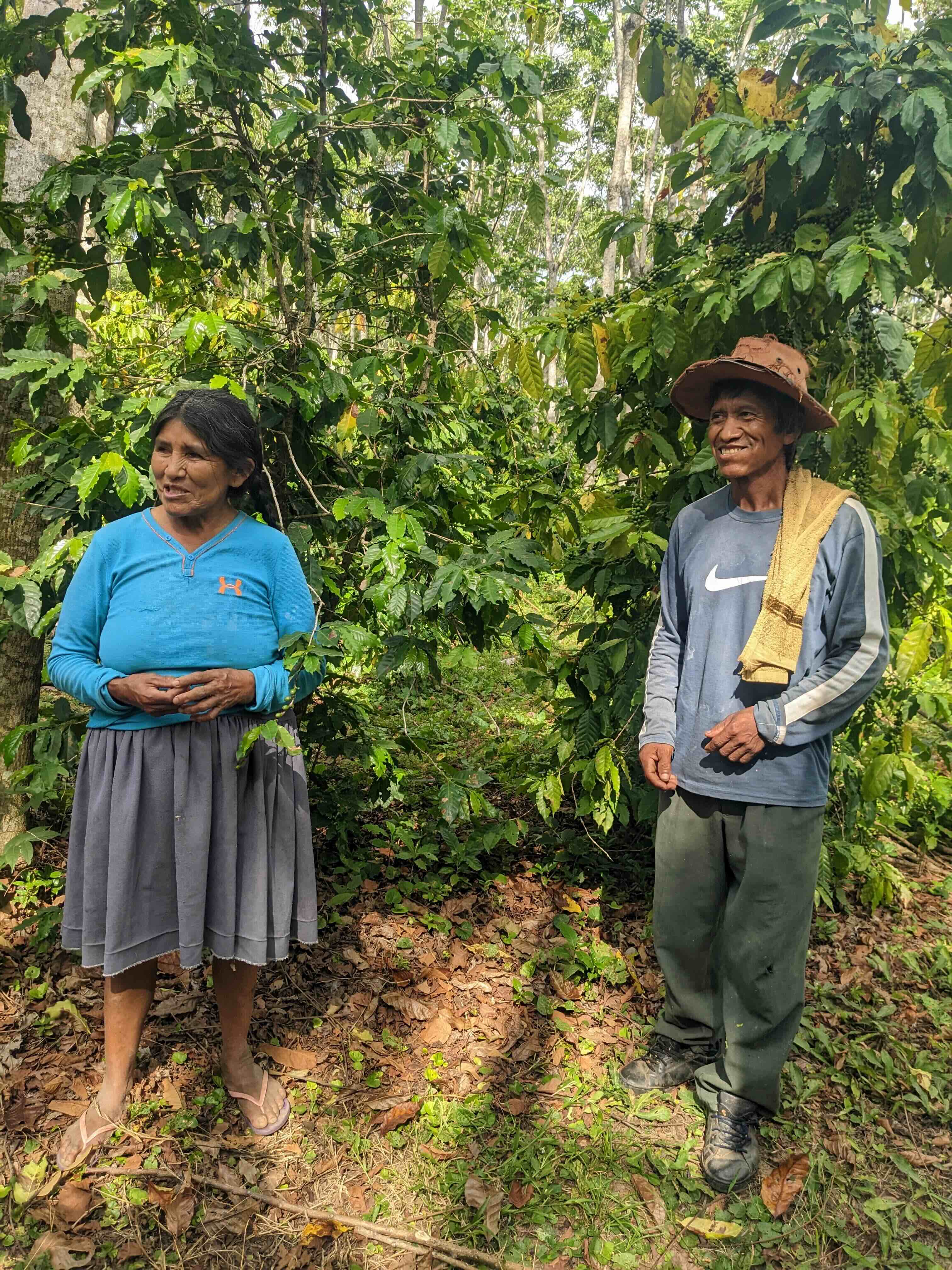
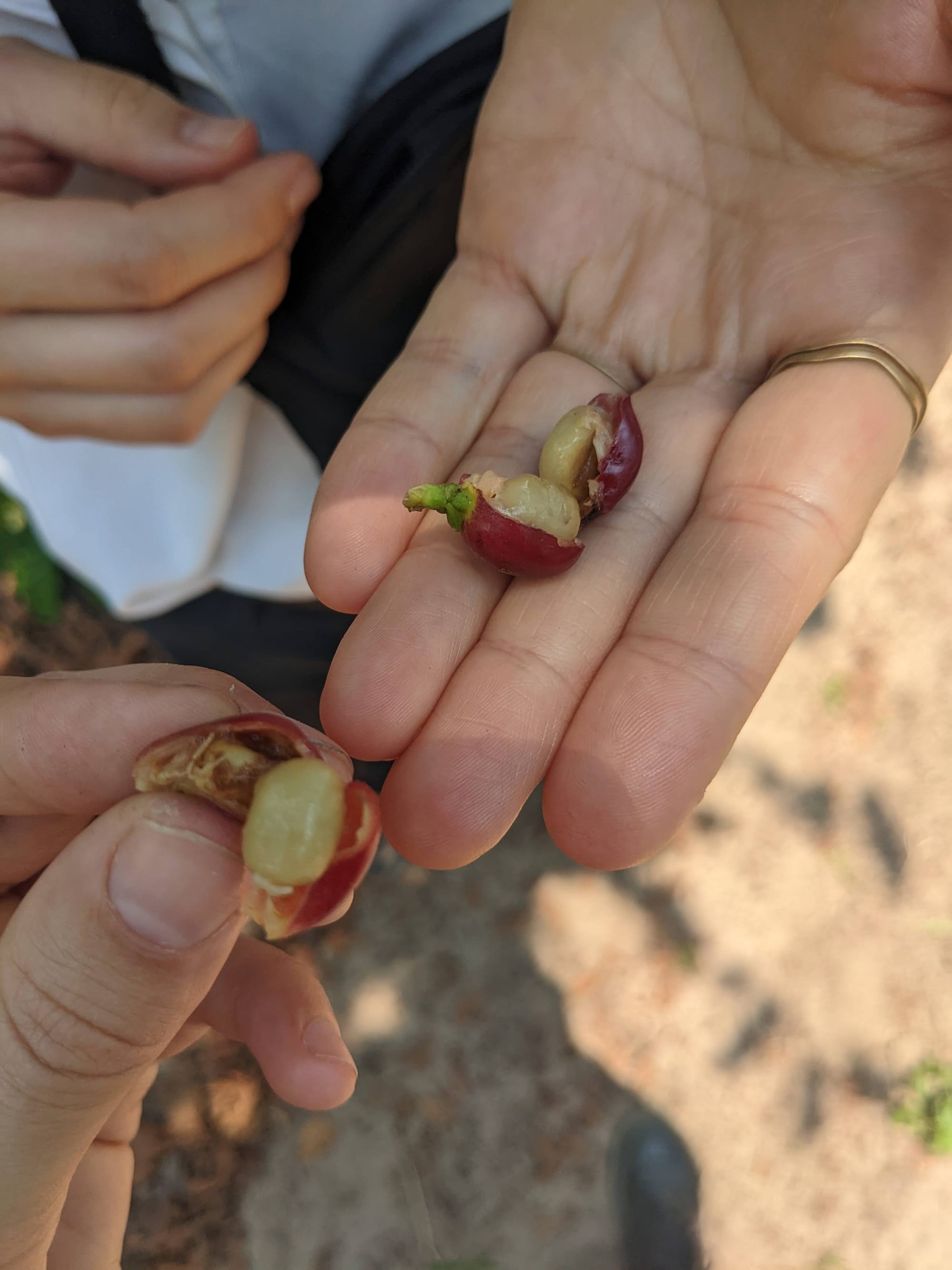
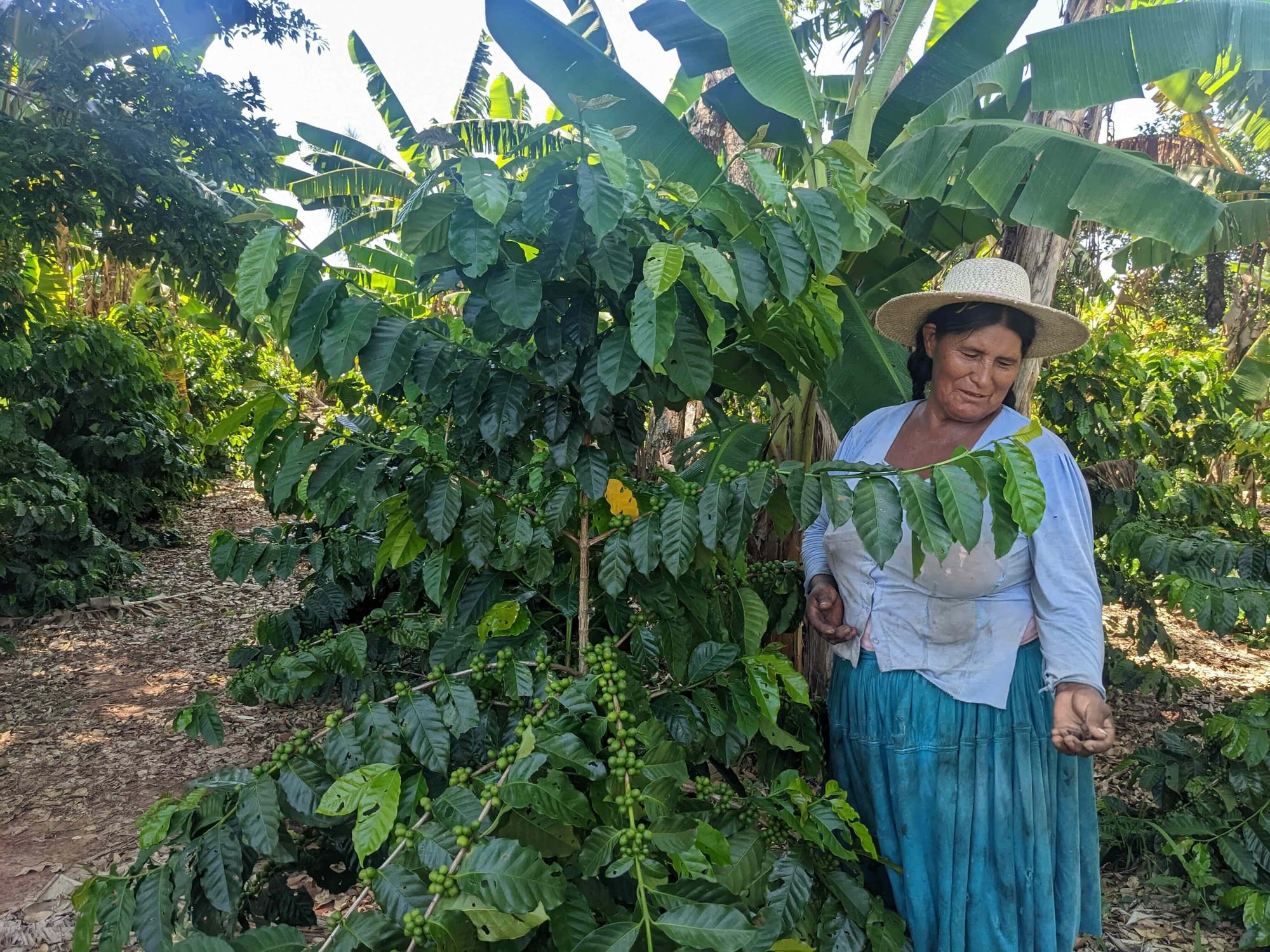
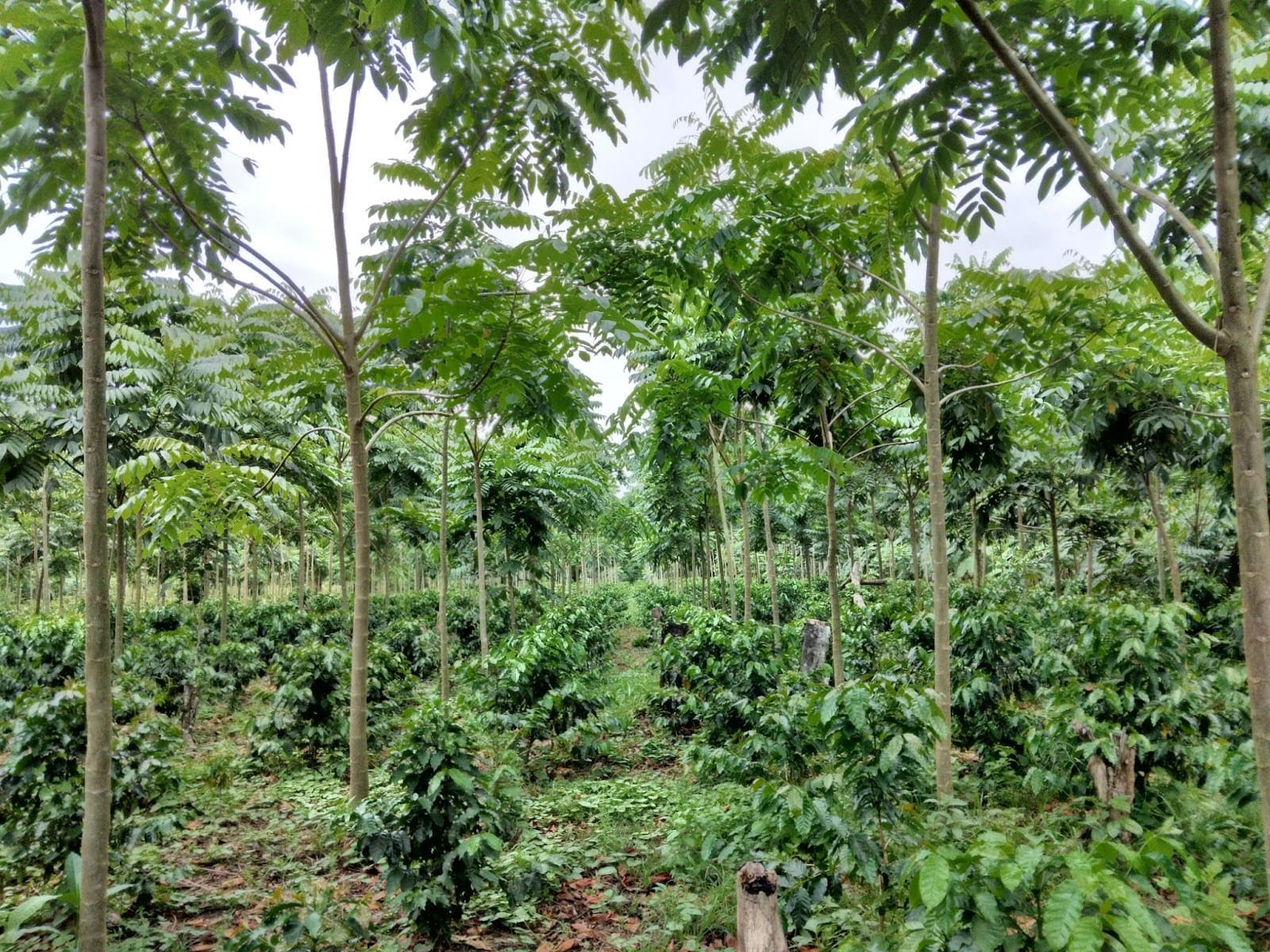
Victoria and Francisco Vique - specialty coffee producers in Bolivia; Coffee beans from Victoria and Francisco’s plot; Sicirec coffee producer Dona Maria with her crop; Coffee trees intercropped with shade trees
In Colombia, we partnered with PUR between 2017-2023 in major coffee regions including Cauca, once central to Colombia's armed conflict and now undergoing transition. Coffee is Cauca's main crop–home to 17% of Colombia’s coffee producers. Together with PUR we planted nearly 5 million shade trees, restoring land and offering communities alternatives to practices like mining, slash-and-burn agriculture, illicit coca crops, and unsustainable livestock farming.
Building resilience through diverse agroforestry systems
Many projects create highly diverse agroforestry systems that combine coffee with multiple tree and crop species - building resilience against pests, weather, and market fluctuations.
Since 2017, we've partnered with Green Ethiopia to plant over 20 million native trees, reforesting bare mountains. In the Safa region, a women's collective is growing a forest on communal land. By mixing coffee with fruit and shade trees like Ensete ventricosum (‘false bananas’), they’ve boosted their yields and livelihoods.
Another Ethiopian partnership with Stiftung Menschen für Menschen in the Nono Benja region has been running since 2020, helping more than 300 farmers adopt agroforestry.
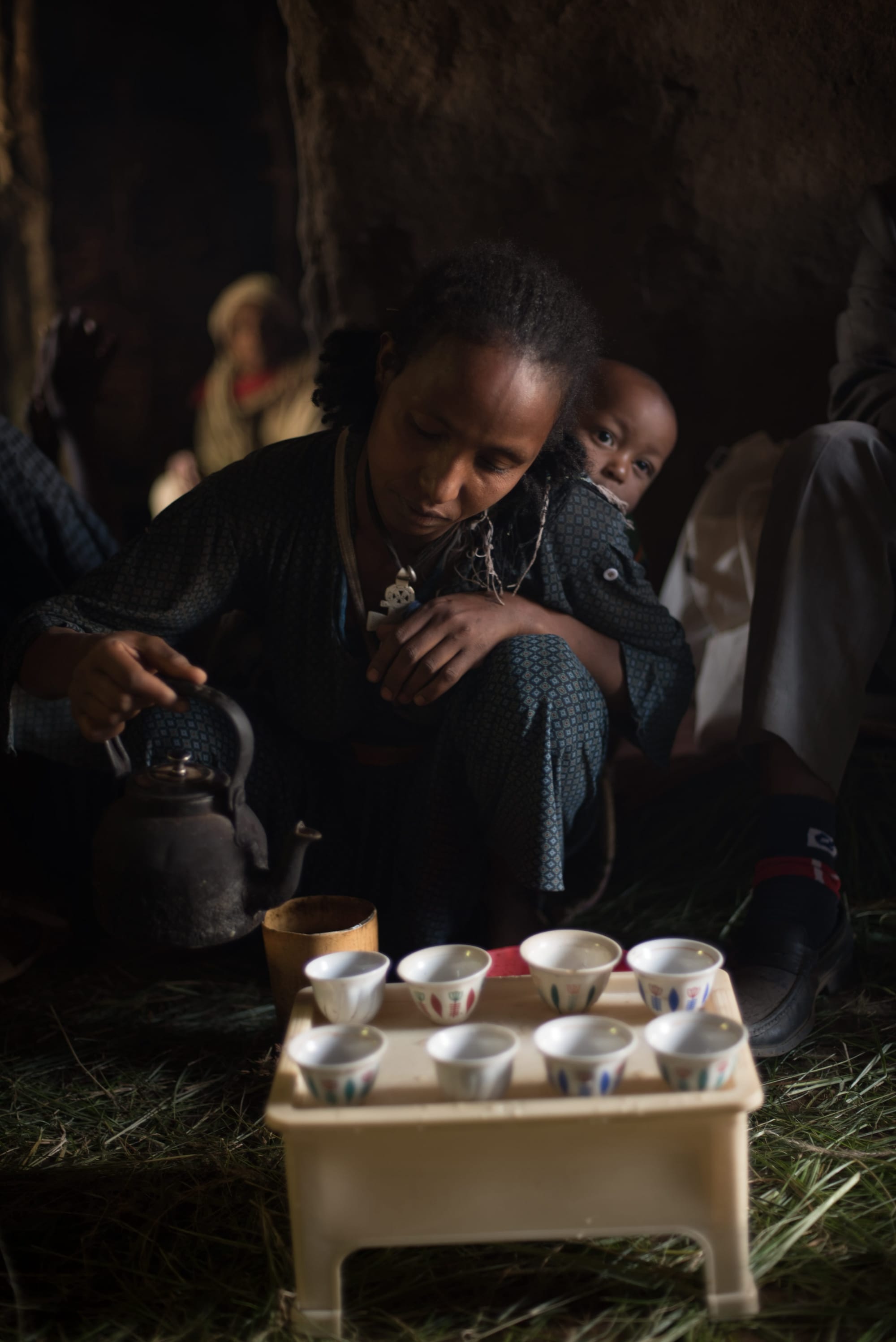
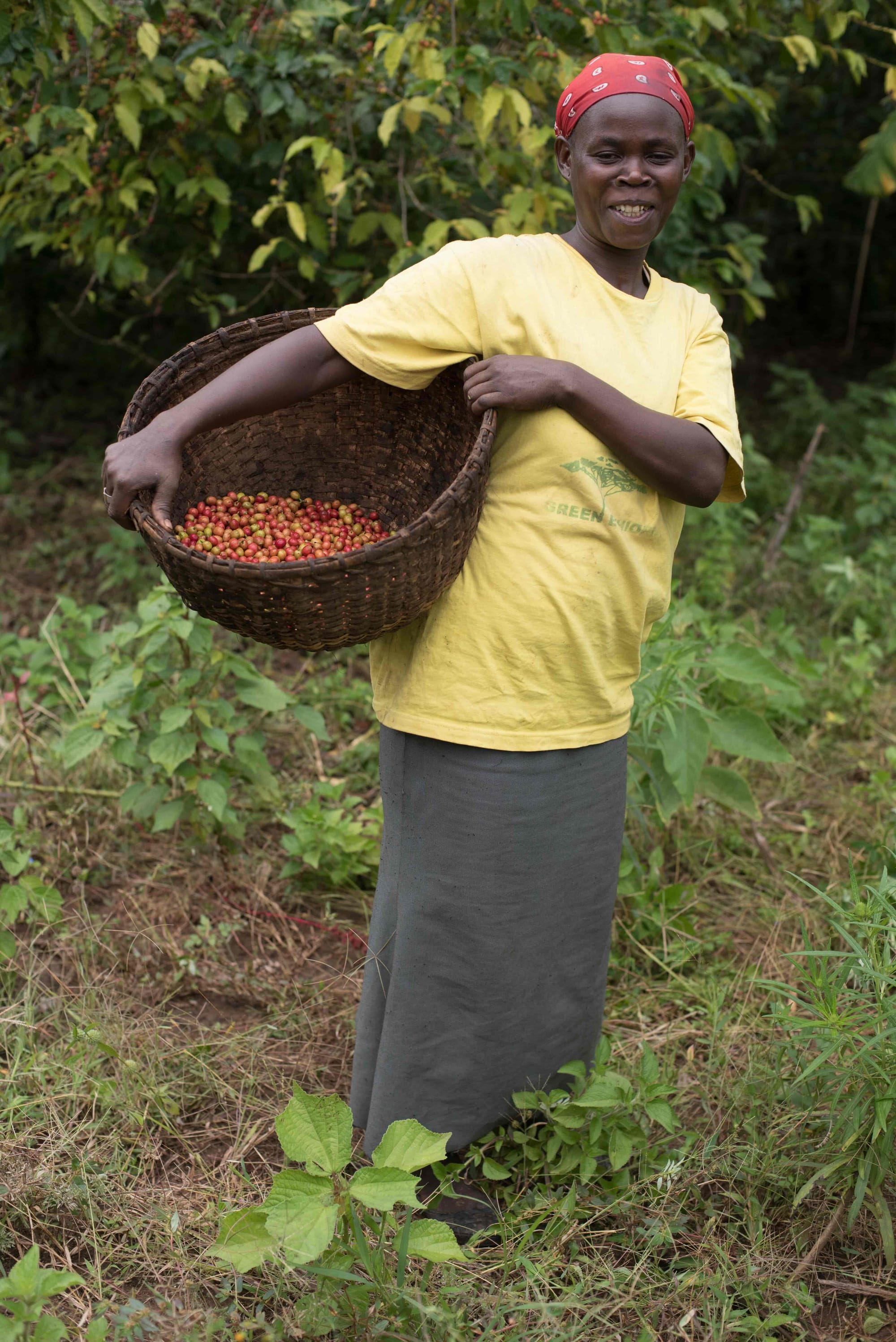
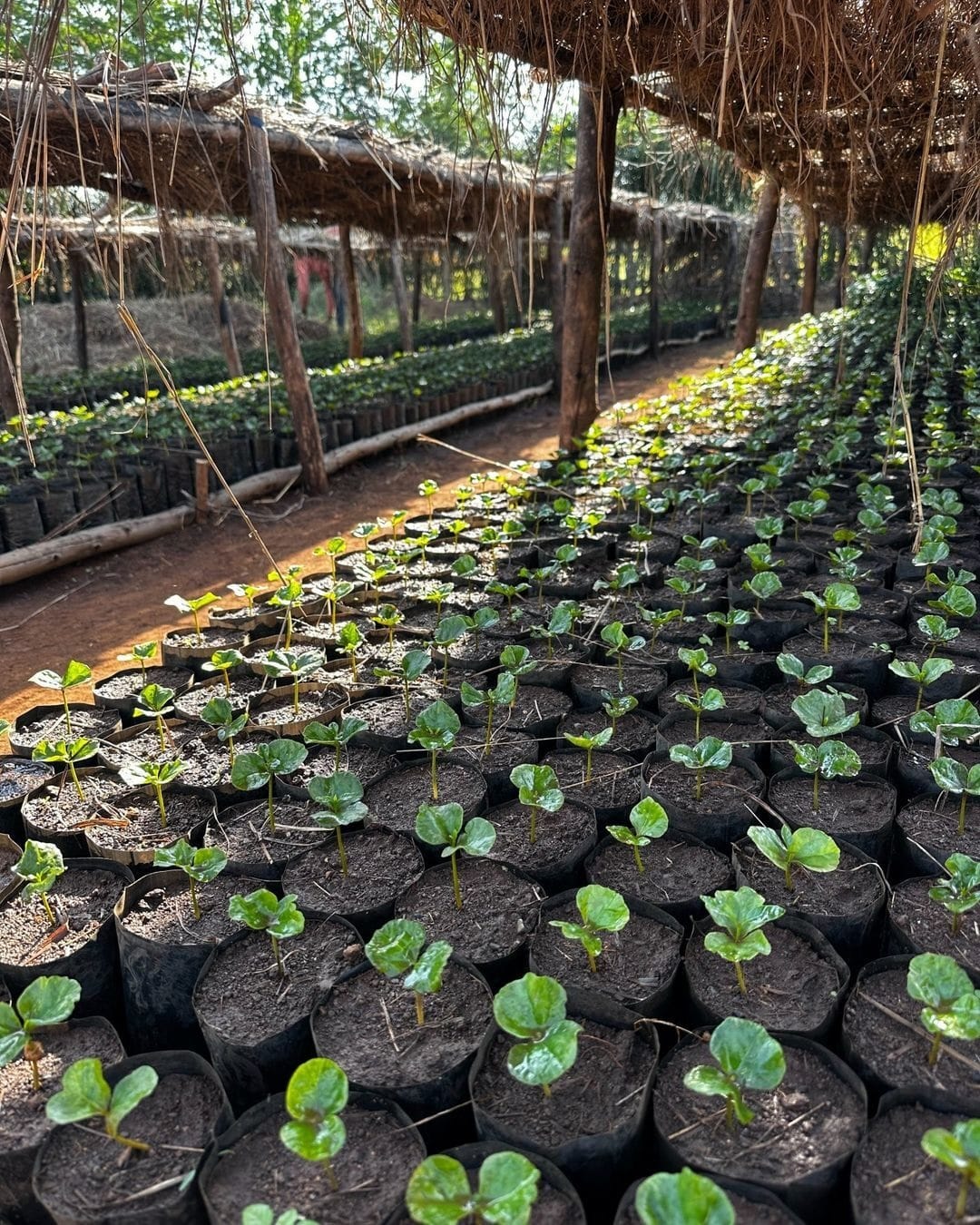
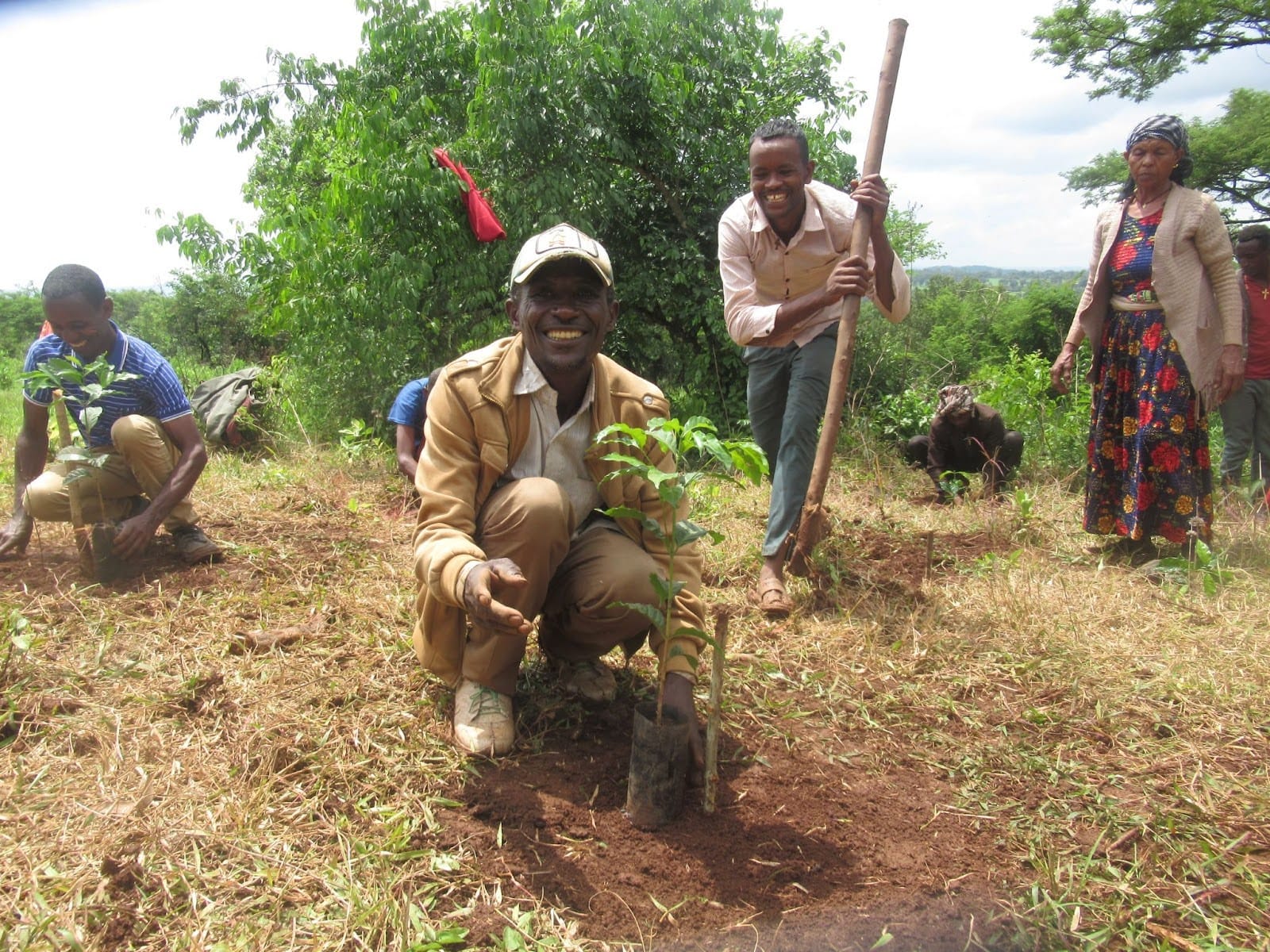
Pouring coffee in Ethiopia; Safa coffee farmer Almaz with her harvest; Coffee seedlings at a nursery in Ethopia; Planting coffee in Nona Benja
Across the Atlantic, we launched our first Dominican Republic project earlier this year with Plant With Purpose, which equips rural smallholder farmers to plant and maintain biodiverse cacao and coffee agroforestry systems. Farmers report healthier soil (49%) 79% greater crop diversity, and a huge 91% drop in poverty within just five years.
We're seeing similar success in West Africa, where the increasing demand for cocoa is driving deforestation. Our partner APAF in Côte d'Ivoire uses ancestral agroforestry techniques to reverse this, helping farmers abandon slash-and–burn practices and chemical fertilizers. Coffee and cacao are intercropped with trees like Samanea saman, Albizia stipulata, Fraké, citrus, and Bassam mahogany. These trees provide shade, fertilize soil, and yield firewood, timber, fruit, and medicine–reducing costs while raising incomes from organic coffee and cacao.
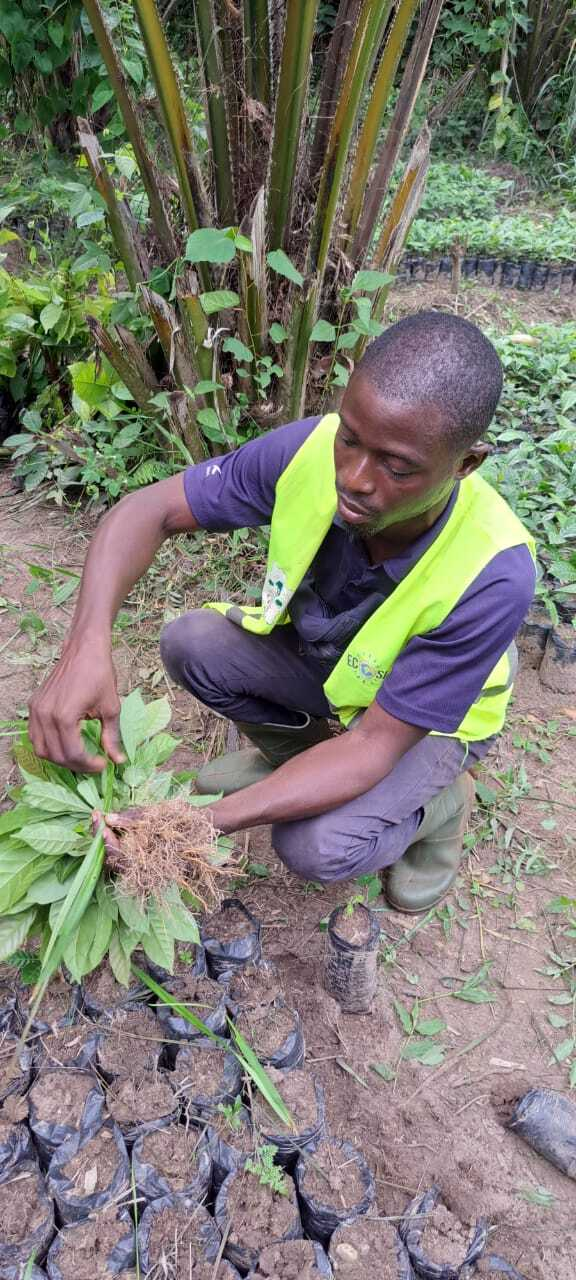
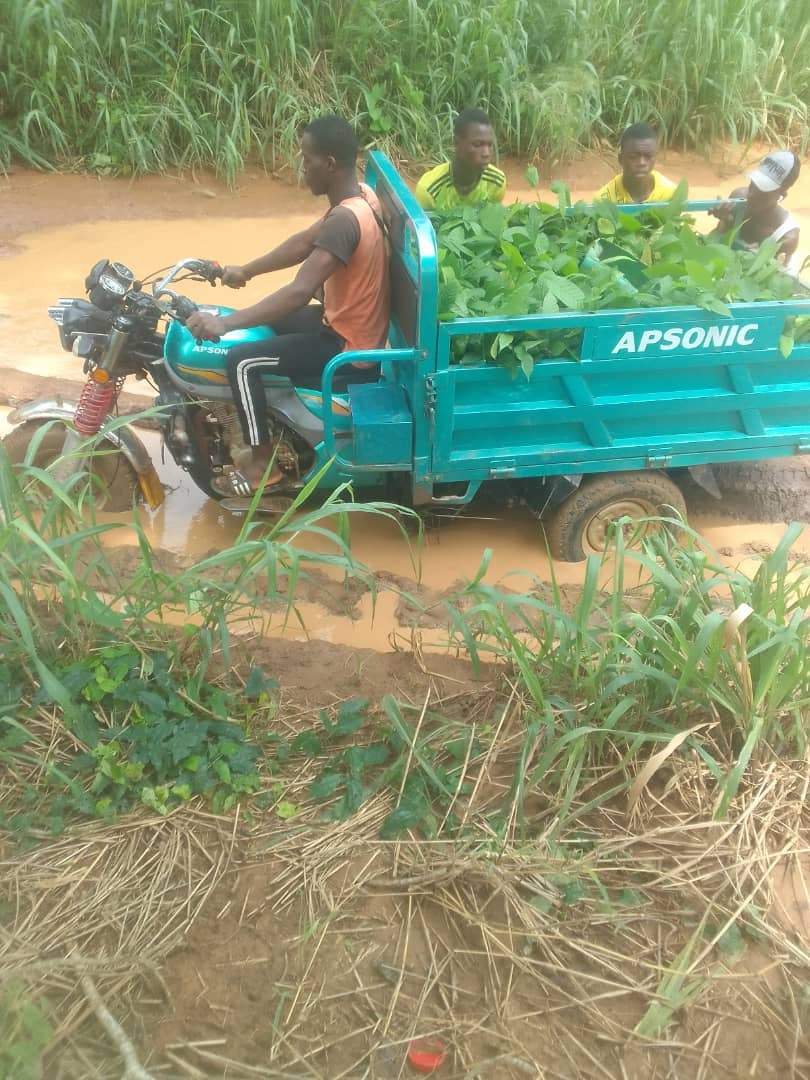
An APAF field officer prepares coffee seedlings for distribution to farmers; Delivering seedlings to plant in the rainy season can be challenging!
Ecological succession: Working with nature's timeline
In some projects we plant trees according to ecological succession - mimicking how forests naturally regenerate over time.
Earlier this year, we launched a two-year agroforestry project with Grupo Gaia in Brazil's Minas Gerais region. Grupo Gaia helps farmers shift from conventional to agroecological systems that restore land and boost biodiversity. It’s Brazil's first purpose company, and partnered with the country’s largest agrarian reform movement (MST) to develop this project on land donated specifically for agroecology.
Together we'll plant around 250,000 trees - mostly coffee intercropped with fruit species chosen in partnership with local cooperatives.
Protecting critical primary forests with regenerative agriculture
Further north, Peru holds 13% of the Amazon, but has lost one million hectares of forest in 15 years. Through our partner Progreso, we're empowering farmer collectives to spread regenerative practices (rather than traditional monocultures), including planting coffee, to keep land fertile and reduce pressure on untouched ecosystems.
A global approach to sustainable coffee
Aside from these projects we've also invested in others supporting sustainable coffee production–like Slow (Forest Plateau) in Vietnam, which sells agroforestry coffee to major European clients.
From Ethiopia to Vietnam, these projects show that coffee farming and forest restoration must go hand in hand. As climate change threatens production worldwide, agroforestry isn't just good for farmers and forests - it's essential for the future of coffee.
Keep searching with Ecosia and know that you're supporting biodiversity, and your morning brew.